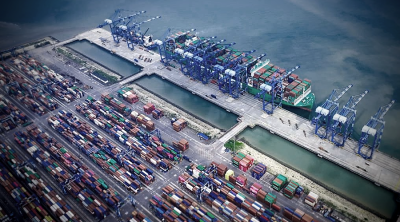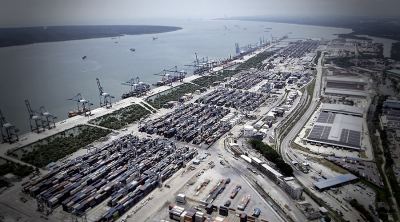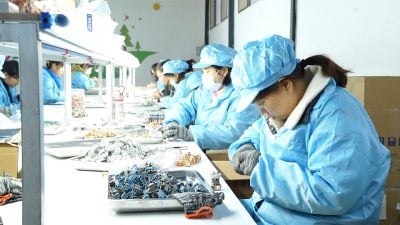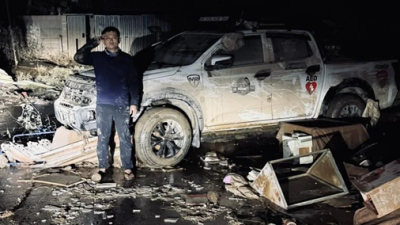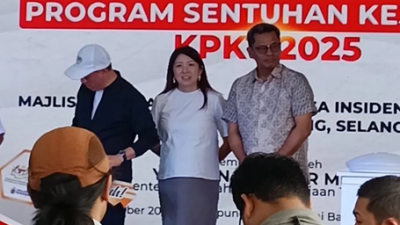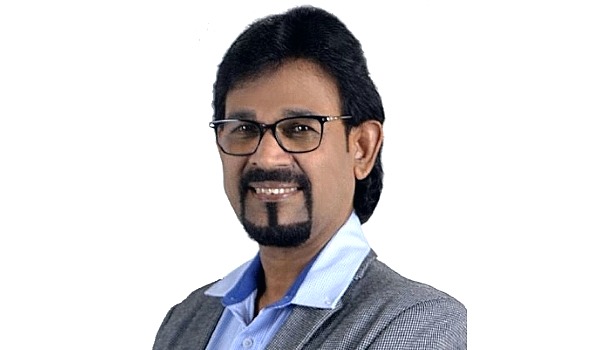
Malaysians are a “throwing” society. We are now throwing or discarding 1.20 kg per person of average waste per day, with Penang alone higher rate than this amount.
How wonderful it would be if our national economic growth rate was equivalent to our waste level.
Our waste is piling up with an alarming 35,000 tons being generated per day, the main source being our ever-increasing voracious appetite, followed by the easy-dine and easy-discard style of food containers.
This is a clear display of our ignorance towards the amount of waste being accumulated on a daily basis, and the threat it imposes to our world.
What happens to the waste? On 6 September 1995, the government privatized the responsibilities of the local authorities (LA) in managing the daunting task of waste management.
Since 1 January 1997, the solid management responsibility of 48 LA’s has been privatized to three concession companies, namely Alam Flora for the central region (including Pahang, Kelantan and Terengganu) and Southern Waste for the Melaka, Negeri Sembilan and Johor, whilst the northern region (Kedah and Perlis, as Penang and Perak maintained waste management under their states) has been placed under E-Idaman.
In 2007, The Solid Waste and Public Cleansing Management Corporation Act 2007 (SWMPC) was approved by the Parliament on 17 July 2007 and gazetted on 30 August 2007 by vesting executive power to the federal government to implement solid waste management and public cleansing.
The concessionaries did a great job. All waste related machineries were replaced, as concessionaires focused on only collection of waste.
The SWCORP a government waste commission focused on waste education in the society with Reduce, Reuse and Recycle (3R); a fair job done in imparting the importance of waste management at source, which now stands at 25-28%, and overall improving the collection service at good pace.
However, we failed miserably on the move into waste to energy (WTE), not because of the science behind the project but due to political, logistical and to some extent racial reasons.
Our waste will increase to 49,670 tons in 2030. The average composition of Malaysia’s municipal solid waste (MSW) consists of about 45% food, 24% plastic, 7% paper materials, 6% iron, 4% wood, 3% glass and the remaining percentage belongs to others.
This shows that a remarkable amount of Malaysia’s MSW is recyclable.
The moisture level of Malaysian MSW is in the range of 52- 66% that reduces their calorific value.
The calorific value of our waste is a challenge, but this can be overcome with the help of material recovery facilities.
Our only way forward is through Waste to Energy (WTE) methodology.
In Malaysia we are already having mini-incinerators or small-scale facilities that were introduced since 1996 in popular tourist islands namely Langkawi, Labuan, Pangkor and Tioman, to manage their waste disposal.
They incinerated an overall of 3,221 tons of MSW throughout the year, though they are facing several teething issues.
During the COVID-19 pandemic, we did a great job by incinerating the medical waste through the help of incinerators.
There were no complaints nor protests towards such actions. This has proven well for our nation and our people.
If we can manage the pandemic, we are certainly ready for the WTE idea, too.
Waste to Energy (WTE) involves a waste treatment process to convert non-recyclable waste materials into usable energy through a variety of processes, including combustion, gasification, pyrolization, anaerobic digestion and landfill gas (LFG) recovery.
Due to the huge amount of the municipal solid waste (MSW) produced daily in urban areas, the best is to use the waste as feedstock to such technologies. We will not have any issues obtaining the waste, since we generate waste very easily.
Malaysia must prepare herself to embrace WTE the soonest possible, though we may have teething issues like no separation of waste at source.
Malaysia must stride forward and go past the landfilling waste to WTE facilities, which brings enormous gains for the environment and the society at large.
Resource savings and recovery are one of the biggest advantages.
Metals, wood, plastic and glasses can be separated using Material Recovery Facility (MRF) from the waste and these materials can be recycled.
WTE facilities generate power in the form of electricity. This is a great source of energy which could be tapped into the main grid that supplies power throughout the nation, and the rates paid by the people for electricity supply can be renegotiated with the Independent Power Producers (IPP) and TNB.
Nestlé burns its coffee waste and powers up its plant, whilst Carlsberg uses Anaerobic Digestor method to treat their waste and power their production plant.
Waste to Energy is a net greenhouse gas reducer. Methane is a greenhouse gas which is mostly emitted from decomposing waste in landfills. It has more than 20 times the potency of carbon dioxide and is ranked as a dangerous contributor to climate change.
Waste to energy facilities avoid the production of methane while producing almost ten times more electricity from each tons of waste compared to landfills.
Waste to energy facilities are the only solid waste disposal option with state-of-the-art air pollution control technology.
Methane will now be harnessed and power will be the best alternative for all.
Landfill usage and landfill expansions can be greatly reduced.
WTE facilities typically reduce waste volumes by 90%. Fewer and smaller landfills will be needed process ash, and instead this protects a valuable natural resource – land.
The economy of the community is enhanced. Studies shows that the average waste to energy facility in the US is responsible for the creation of several high-end full-time jobs.
Generally, these are salaried, skilled positions with relatively high pay. These jobs have at least a 40-year projected life span.
High-tech, cleaner, hygienic job, higher safety are the encouraging signs of WTE projects.
The real time monitoring capabilities of the new WTE checks precisely on the emission level.
In China, all emissions data can be viewed by the public from the WTE and this gives greater transparency and confidence to the people, especially on air quality.
WTE is a space-saving innovative technology which reduces the landfill footprints and triples the capacity of hygienic waste management and yet yields greater benefits to the society and nation at large.
This is the science of the future.
Whilst landfills are dated, waste to energy is undated, lifelong, and there will be progressive carbon footprint reduction further, thus reducing fossil fuel dependence in the years to come.
Experts of waste management say that even the MRF may become obsolete, thus burning every material that goes into the furnace.
Malaysia must prepare herself to embrace WTE the soonest possible, though we may have teething issues like no separation of waste at source.
The concessionaires are focusing on sending more waste to landfills as their contract says more waste, more money, low recycling rate that needs to be stepped up, high water calorific value of our waste, lower rates offered by the IPP for the power generated by WTE and our way of life and our way of throwing waste.
These are issues that can be addressed if the society, government, academics and the waste industry players meet to address and resolve these issues altogether.
(Ravindran Raman Kutty aka Captain Planet, was our nation’s number one waste management educator, who had several talk shows over radio and regular columns in all newspapers. He is sharing why we need to move into WTE as soon as possible, as the waste is piling and landfills are growing bigger and bigger.)
ADVERTISEMENT
ADVERTISEMENT






